Von Gaylord Audio Nirvana Mono amplifier and Harmony preamp by Key Kim
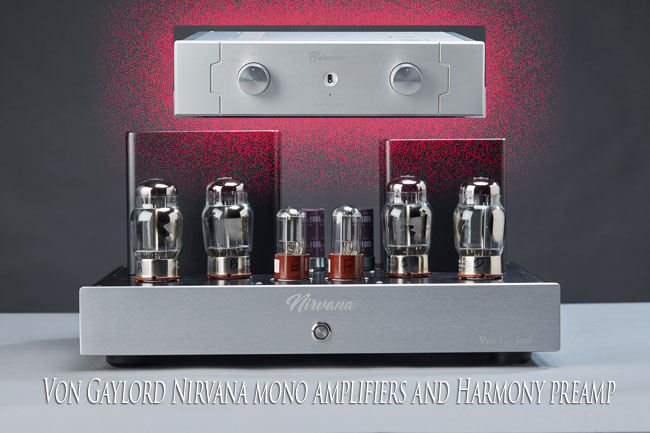
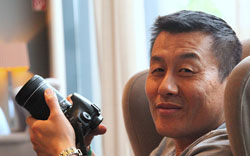 Munich’s High-End show, the best two-channel, speciality audio event I know of, has grown so large that it’s no surprise that you won’t see a favorite exhibitor. For example, I had no clue that Von Gaylord Audio – a San Francisco-based exotic tube electronics manufacturer were exhibiting. That is until I ran into company president, Ray Leung at the MOC shuttle bus stop! As you may have guessed, my very first stop the next morning was at the VGA suite. It was in that suite that I got my first encounter with the new VGA Nirvana line-up that featured their Nirvana mono amps, Harmony preamplifier, Uni DAC, and Legend Reference Module loudspeakers – all connected with its Return series of the Legend cables.
Munich’s High-End show, the best two-channel, speciality audio event I know of, has grown so large that it’s no surprise that you won’t see a favorite exhibitor. For example, I had no clue that Von Gaylord Audio – a San Francisco-based exotic tube electronics manufacturer were exhibiting. That is until I ran into company president, Ray Leung at the MOC shuttle bus stop! As you may have guessed, my very first stop the next morning was at the VGA suite. It was in that suite that I got my first encounter with the new VGA Nirvana line-up that featured their Nirvana mono amps, Harmony preamplifier, Uni DAC, and Legend Reference Module loudspeakers – all connected with its Return series of the Legend cables.
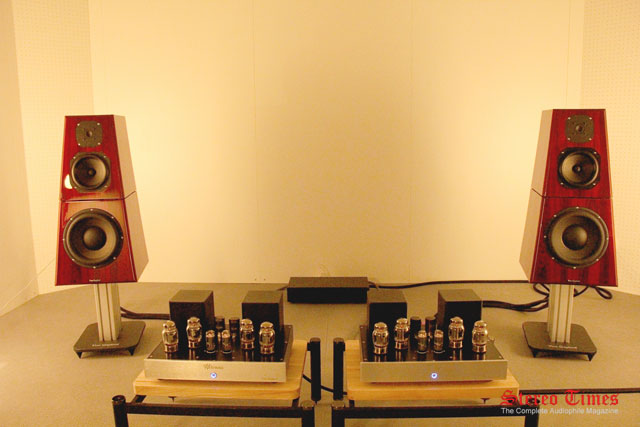
The sound quality proved outstanding despite the noisy show conditions. It was transparent, detailed, and musical with excellent imaging (photo above – Munich report here). I had initially reviewed the complete VGA system back in 2013 (reviewed here), and listening to this new line of electronics, I admit, I was very impressed. So much so, I had to ask Leung if he could send me the Nirvana mono amps and the Harmony preamp for a review.
I was thrilled through the gills when he said he would be happy to send them my way.
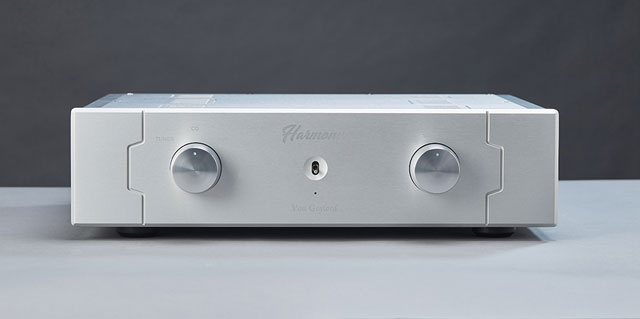
The Harmony is VGA’s first preamplifier in a single chassis design. VGA has always used two chassis design preamplifiers. However, distributors from Europe and Asia requested a separate chassis preamplifier for their market. They wanted a more straightforward design, which would take up less rack space. Leung tells me it was a quite a challenge for him to design a single chassis preamplifier incorporating a high voltage power supply in the same chassis with the signal path in a one-box preamplifier. He went back to the drawing board and came up with a completely new design from the ground up with excellent results. This design process took about a year to come to fruition. Both the Nirvana and Harmony are pure Class-A, high current designs.
Leung is very meticulous, and the entire audio section (signal path) is point-to-point hand-wired with silver soldering, enclosed in a steel chassis (6″ L x 5″ W x 2″ H). Leung told me there are two reasons for the inner frame: First, the components are potted to ensure a stable temperature. The potting material works as a cooling system to help stabilize the temperature. In audio, heat is public enemy number one. This design minimizes temperature variations and component values that may affect the sound.
 Secondly, to eliminate vibration, the isolated inner chassis provides an extra barrier to ensure that when distortions go through the outer enclosure, they will not affect the audio path inside the cabinet. To improve the sound quality, brilliantly, Von Gaylord came up with a five-cable design. It is a combination of metal materials mixed and matched to varying gauges. All of this was a very, very long process. These materials are used in the signal path as well as in the power supply section, where the combination is said to improve the preamplifier’s performance considerably. With the implementation of the multi-metal cable design, frequencies are well balanced and distinct while being very smooth, bright, and airy. The bass is extra tight with definition and good bandwidth. The components in the audio section are the best components to be found all over the globe. He cautions on using too many brand name High-End caps and resistors “As they usually don’t blend very well due to strong individual character.” He uses over ten different brands of components for his Harmony. The downside is that he has to break-in the Harmony for 100 hours before it is boxed and ready for delivery. Essentially, this process ensures quality control and makes sure everything’s working correctly before delivery.
Secondly, to eliminate vibration, the isolated inner chassis provides an extra barrier to ensure that when distortions go through the outer enclosure, they will not affect the audio path inside the cabinet. To improve the sound quality, brilliantly, Von Gaylord came up with a five-cable design. It is a combination of metal materials mixed and matched to varying gauges. All of this was a very, very long process. These materials are used in the signal path as well as in the power supply section, where the combination is said to improve the preamplifier’s performance considerably. With the implementation of the multi-metal cable design, frequencies are well balanced and distinct while being very smooth, bright, and airy. The bass is extra tight with definition and good bandwidth. The components in the audio section are the best components to be found all over the globe. He cautions on using too many brand name High-End caps and resistors “As they usually don’t blend very well due to strong individual character.” He uses over ten different brands of components for his Harmony. The downside is that he has to break-in the Harmony for 100 hours before it is boxed and ready for delivery. Essentially, this process ensures quality control and makes sure everything’s working correctly before delivery.
The chassis is CNC machined, finished in heavy-duty aluminum with an elegantly designed faceplate, The Harmony logo is in the middle, and the smaller Von Gaylord logo is at the bottom of the faceplate. The Harmony features a simple layout design, a Power ON/OFF toggle switch located dead center while an attractive rotary volume knob is on the right front — the rear houses three In and Out RCA connections (sorry no balanced XLR ins or outs). The Harmony preamp comes standard with remote control.
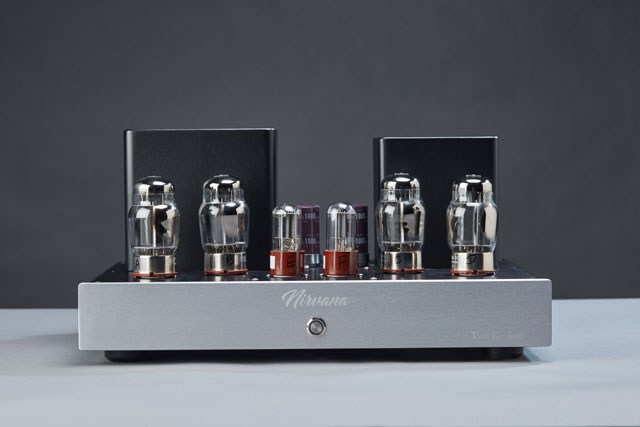
The Nirvana mono amplifier is a parallel-push-pull mono block amplifier. It utilizes four 6550 tubes and produces a powerful 130 watts per channel in triode mode. It’s a high-efficiency triode design and cleverly uses a self-adjusting auto bias. The newly re-designed output transformer is massive, producing a higher current yet, it is very musical, and it improves the low extension with substantial body and texture. It uses the new wiring combination upgrade as on the Harmony, which enhances the sound. The Nirvana uses point-to-point wiring minus the driver section. Leung tells me it is too complex to do hard wiring. The output tubes are run conservatively and should have an impressive six to eight-year life span. They are said to run cool as well. The chassis is CNC machined finished in heavy-duty aluminum with top quality parts. The output transformer and power transformer are visible at the rear of the chassis frame with a pair of 6SN7 driver tubes located between two (matched) pairs of 6550 output tubes.
Leung told me the Nirvana mono amplifiers and the Harmony preamplifier were burned-in at the factory. How thoughtful because as already-burned-in gear saves me lots of time and energy. Setting up the Nirvana and the Harmony was a breeze and took less than 30 minutes. I used the 8 Ohm tap throughout the auditioning process, which worked the best on my Conspiracy loudspeakers. After the set-up, I gave a quick listen and, right off the bat, the sound was impressive. I knew I was in for a treat. All the VGA Nirvana and the Harmony needed was about 20 minutes of warm-up for the circuit and tubes come alive, and it sounded good the moment I turned it on. I used the VGA Nirvana and Harmony duo to drive my reference Conspiracy loudspeakers in place of my Thrax Teres mono amplifiers and Thrax Dionysos preamplifier. The VGA duo sounds were musically convincing and conveyed instruments and voices with excellent transparency, presented with believable color, texture, weight, and solidity. The transients were carried with liveliness and speed, but with no hardness or aggression.
 The first recording I cued up was one of my favorites, Beethoven’s Concerto for Piano, Violin, Cello, and Orchestra Op. 56 in C Major – generally known as the “Triple Concerto” performed by Christian Zacharias, Ulf Hoelscher, and Heinrich Schiff, with maestro Kurt Masur conducting Gewanhausorchester Leipzig (EMI CDC 7 47427 2). It was moving and very emotional, as it opened with a beautiful cantabile theme on the solo cello, and this expressive melody was subsequently taken up by woodwinds and violins. It displayed a rich and full harmonic structure that was thoroughly engaging. The VGA duo reproduced music with a realistic sheen on massed and solo strings alike, producing an ideal balance of bow and the woody resonance.
The first recording I cued up was one of my favorites, Beethoven’s Concerto for Piano, Violin, Cello, and Orchestra Op. 56 in C Major – generally known as the “Triple Concerto” performed by Christian Zacharias, Ulf Hoelscher, and Heinrich Schiff, with maestro Kurt Masur conducting Gewanhausorchester Leipzig (EMI CDC 7 47427 2). It was moving and very emotional, as it opened with a beautiful cantabile theme on the solo cello, and this expressive melody was subsequently taken up by woodwinds and violins. It displayed a rich and full harmonic structure that was thoroughly engaging. The VGA duo reproduced music with a realistic sheen on massed and solo strings alike, producing an ideal balance of bow and the woody resonance.
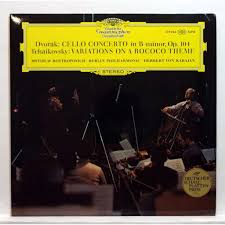 The VGA duo’s effect on my system’s spatial performances was outstanding. I was listening to the Dvorak’s Cello Concerto for Cello and Orchestra in B minor, Op. 104 (DG 139044) as performed by the master, Mstislav Rostropovich, with the maestro, Herbert Von Karajan conducting the Berliner Philharmoniker, the soundstage and the sense of space were exceptional. The VGA duo provided a three-dimensional soundstage that was deep and wide and extended beyond the loudspeaker’s outer edges and far beyond my listening room. To me, tubes have a certain magic, creating a superb three-dimensional soundstage. The VGA duo’s portrayal of individual images is excellent, revealing layers of small detail and nuance that were delightful.
The VGA duo’s effect on my system’s spatial performances was outstanding. I was listening to the Dvorak’s Cello Concerto for Cello and Orchestra in B minor, Op. 104 (DG 139044) as performed by the master, Mstislav Rostropovich, with the maestro, Herbert Von Karajan conducting the Berliner Philharmoniker, the soundstage and the sense of space were exceptional. The VGA duo provided a three-dimensional soundstage that was deep and wide and extended beyond the loudspeaker’s outer edges and far beyond my listening room. To me, tubes have a certain magic, creating a superb three-dimensional soundstage. The VGA duo’s portrayal of individual images is excellent, revealing layers of small detail and nuance that were delightful.
 The rendering of the orchestra was striking; the strings, woodwinds, and horns were palpable, detailed, and filled with emotion. The dynamics were expressive in a natural sense. The VGA duo drove the Conspiracy with power and authority, and it was able to scale the dramatics of the full orchestra crescendos with great ease. The bass was potent and tuneful with a high level of definition. However, I did notice the Teres and the Dionysos handled the Conspiracy with a touch better bass, precision, and control but, at a cost, more than three times the price of the VGA duo. In general, the VGA duo performed brilliantly.
The rendering of the orchestra was striking; the strings, woodwinds, and horns were palpable, detailed, and filled with emotion. The dynamics were expressive in a natural sense. The VGA duo drove the Conspiracy with power and authority, and it was able to scale the dramatics of the full orchestra crescendos with great ease. The bass was potent and tuneful with a high level of definition. However, I did notice the Teres and the Dionysos handled the Conspiracy with a touch better bass, precision, and control but, at a cost, more than three times the price of the VGA duo. In general, the VGA duo performed brilliantly.
The VGA duo’s midrange is excellent in timbre, tone color, transparency, and freedom from grain. Its ability to bring to life music’s underlining emotion was as incredible as I have heard in its price range and above. The VGA duo conveys voices and instruments with the natural rendering of timbre. It didn’t matter whether I was listening to female vocalists or chamber music. I consistently felt drawn into the music. When I played Melody Gardot’s My One and only Thrill (Verve B0012563-02) sounded marvelous. The VGA duo rendered Gardot’s voice beautifully; the immediacy and solidity of the vocal imagery were wonderful and resolved a wealth of detail and nuance.
The VGA Nirvana mono amplifier and the Harmony preamplifier are fabulous sounding components that don’t break one’s bank account. To make it more accessible, VGA now offers factory direct sales to pass on savings to audiophiles. I have had the VGA duo for about six months without a single glitch; they have been entirely reliable. At just under $15k for both the VGA Nirvana mono amplifiers and the Harmony preamplifier, they are a massive bargain in today’s skyrocketing market. As far as I’m concerned, the VGA Nirvana mono amplifiers and the Harmony preamplifier are outstanding. They are hereby highly recommended!


key kim
Specifications: Von Gaylord Audio Nirvana Mono- Amplifier
Price: $8,495 per pair
Mono-block power amplifier
130 watts per channel triode mode tube amplifier
6550 vacuum tubes
High efficiency Triode design
Self adjusting AutoBias
Hand soldiered point-to-point wiring
Premium binding post
Frequency response: 23Hz to 25kHz
Tubes: 6550 x 8, 6SN7 x 4 for 2 channel
THD @ 1Watt: 0.086%
Distortion @ 3dB below clipping:
Phase Shift: +6 degree 20 – 20kHz
Dynamic Range: 92db
Power Output into 4 & 8 ohms: 110 watts RMS
Dimension: 17” width x 8.5” height x 12” depth
Total Weight: 90 lbs
Specifications: Von Gaylord Audio Harmony Pre-Amplifier
Price: $6,495
Class A operation Preamplifier
Inputs for CD, Tuner, Aux
Ported module design
Premium internal Von Gaylord silver wire
Frequency response: 10Hz to 85kHz
S/N ratio: >102 dB
Input sensitivity: 120mV, 2V out 30db gain
Dimension: 17” W x 4.5” H x 13.5” D
Total Weight: 45 lbs
Website: Von Gaylord Audio
Stereo Times Masthead
Publisher/Founder
Clement Perry
Editor
Dave Thomas
Senior Editors
Frank Alles, Mike Girardi, Russell Lichter, Terry London, Moreno Mitchell, Paul Szabady, Bill Wells, Mike Wright, and Stephen Yan,
Current Contributors
David Abramson, Tim Barrall, Dave Allison, Ron Cook, Lewis Dardick, John Hoffman, Dan Secula, Don Shaulis, Greg Simmons, Eric Teh, Greg Voth, Richard Willie, Ed Van Winkle, Rob Dockery, Richard Doron, and Daveed Turek
Site Management Clement Perry
Ad Designer: Martin Perry



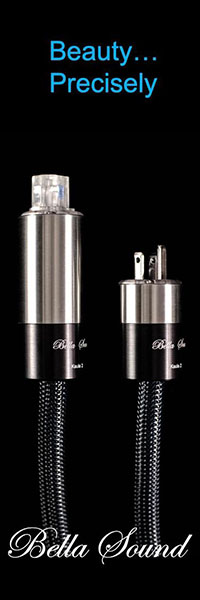


Be the first to comment on: Von Gaylord Audio Nirvana Mono amplifier and Harmony preamp by Key Kim